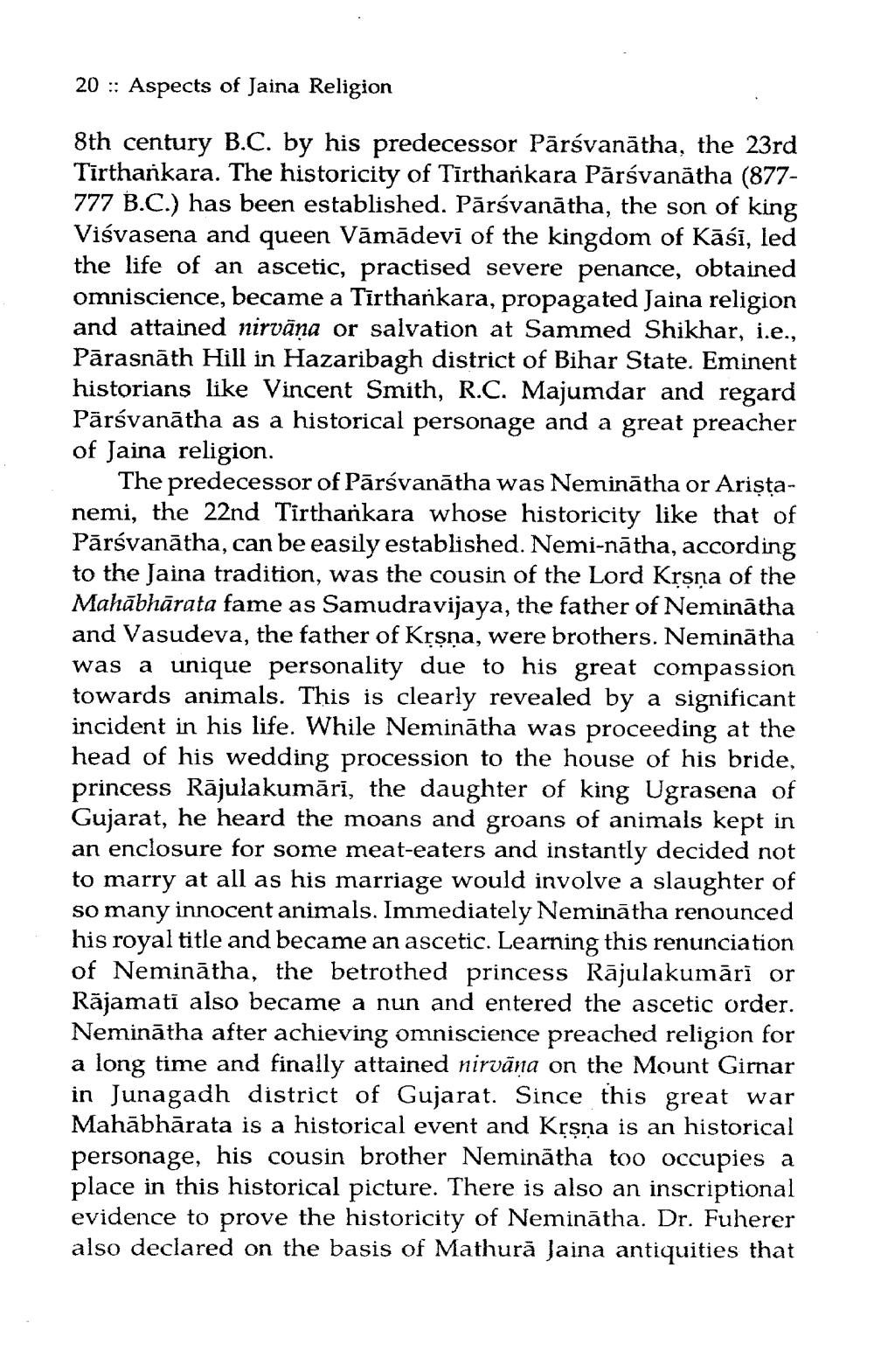________________
20 :: Aspects of Jaina Religion
8th century B.C. by his predecessor Pārsvanātha, the 23rd Tirtharkara. The historicity of Tīrtharkara Pārsvanātha (877777 B.C.) has been established. Pārsvanātha, the son of king Visvasena and queen Vāmādevi of the kingdom of Kāśi, led the life of an ascetic, practised severe penance, obtained omniscience, became a Tirthankara, propagated Jaina religion and attained nirvāna or salvation at Sammed Shikhar, i.e., Pārasnāth Hill in Hazaribagh district of Bihar State. Eminent historians like Vincent Smith, R.C. Majumdar and regard Pārsvanātha as a historical personage and a great preacher of Jaina religion.
The predecessor of Pārsvanātha was Neminātha or Aristanemi, the 22nd Tirthankara whose historicity like that of Pārsvanātha, can be easily established. Nemi-nātha, according to the Jaina tradition, was the cousin of the Lord Krsna of the Mahābhārata fame as Samudravijaya, the father of Neminātha and Vasudeva, the father of Krsna, were brothers. Neminātha was a unique personality due to his great compassion towards animals. This is clearly revealed by a significant incident in his life. While Neminātha was proceeding at the head of his wedding procession to the house of his bride, princess Rājulakumārī, the daughter of king Ugrasena of Gujarat, he heard the moans and groans of animals kept in an enclosure for some meat-eaters and instantly decided not to marry at all as his marriage would involve a slaughter of so many innocent animals. Immediately Neminātha renounced his royal title and became an ascetic. Learning this renunciation of Neminātha, the betrothed princess Rājulakumāri or Rājamati also became a nun and entered the ascetic order. Neminātha after achieving omniscience preached religion for a long time and finally attained nirvana on the Mount Girnar in Junagadh district of Gujarat. Since this great war Mahābhārata is a historical event and Krsna is an historical personage, his cousin brother Neminātha too occupies a place in this historical picture. There is also an inscriptional evidence to prove the historicity of Neminātha. Dr. Fuherer also declared on the basis of Mathurā laina antiquities that




